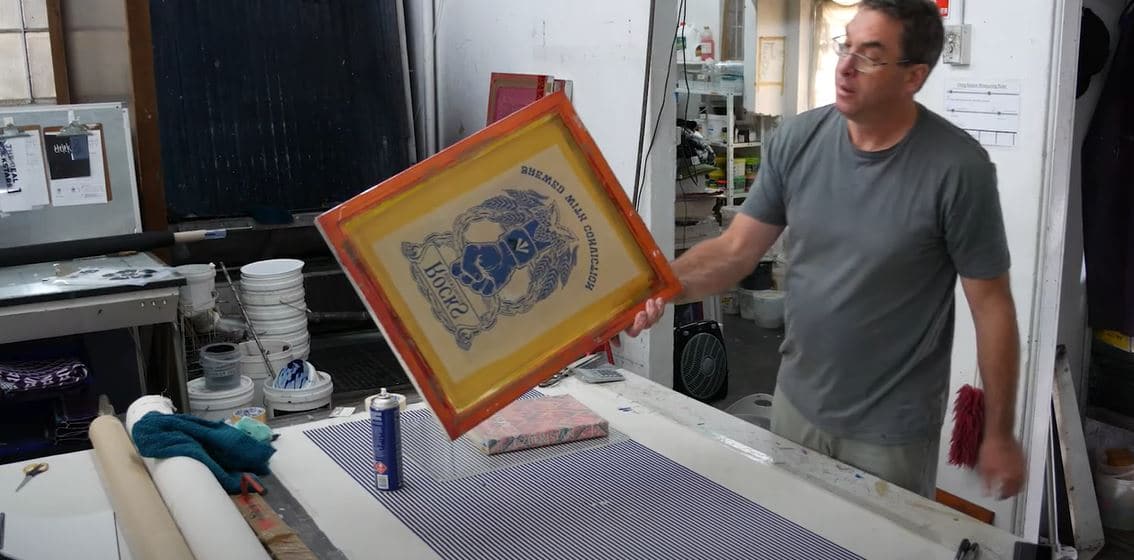The Vital Guide to Recognizing Screen Printing and Its Versatile Utilizes
Screen printing has an abundant history that dates back to old times, developing right into an advanced strategy utilized across numerous sectors today. This guide checks out the details of the screen printing process, describing its applications in fashion, advertising and marketing, and home décor - 10:9 Design LLC Company. Recognizing these fundamentals can open up imaginative possibility for both commercial and imaginative jobs. The adhering to areas will reveal vital suggestions and strategies to boost one's screen printing endeavors
The Background of Screen Printing
Although screen printing has origins that map back centuries, its advancement mirrors the creative and technical improvements of numerous societies. Originating in old China, the technique was at first made use of for decorating fabrics and later spread to Japan, where it ended up being essential to Ukiyo-e woodblock printing. The approach changed to Europe in the 18th century, where it obtained appeal amongst craftsmens and business printers. The development of image solution in the 20th century reinvented screen printing, enabling even more detailed layouts and better effectiveness. Musicians like Andy Warhol even more pushed its popularity, using the medium to develop legendary jobs that mixed commercialism and fine art. By the late 20th century, screen printing had developed itself as a functional method, employed in vogue, advertising and marketing, and art. Today, it continues to develop, integrating electronic technology and increasing its applications across various sectors.
The Screen Printing Refine Explained
Screen printing transforms artistic visions right into concrete layouts with a series of specific actions. A picture is created and after that transferred onto a screen, typically made of great mesh material extended over a framework. A light-sensitive emulsion is related to the screen, which is exposed to light, solidifying in areas not covered by the image. After washing out the unhardened solution, a stencil is developed.
Next, the screen is put over the substrate, whether it be fabric, paper, or an additional material. Ink is after that pressed with the open locations of the stencil making use of a squeegee, depositing the style onto the substrate below. This procedure can be repeated for several shades, needing different displays for each color. The printed product is treated using warm to assure the ink adheres appropriately, resulting in a durable, dynamic style all set for use.
Sorts Of Screen Printing Techniques

In addition, specialized strategies, such as discharge screen printing, remove dye from the fabric to produce softer prints, while foil screen printing applies metallic foil to accomplish pop over here a shiny surface (10:9 Design Screen Printing). Each technique provides distinctive features, satisfying numerous imaginative demands and production ranges, inevitably increasing the possibilities within the screen printing domain
Applications of Screen Printing in Numerous Industries
.png)
Additionally, the signs check this and marketing industries utilize screen printing for developing attractive screens and banners. This method permits bold shades and complex designs that record interest. In electronics, screen printing is utilized for using conductive inks to motherboard, important for component links. Additionally, the home décor market welcomes screen printing to produce distinct layouts on textiles and wall art. On the whole, screen printing functions as a crucial tool across diverse fields, improving products with customized and visually enticing graphics.
Tips for Successful Screen Printing Projects
While carrying out a screen printing task, cautious interest to information can significantly enhance the final end result. Picking top quality materials is important; this includes the screen, inks, and substratums. Utilizing proper mesh counts can affect ink deposition and information resolution. Preparation is similarly crucial; detailed cleaning of displays and proper exposure times ensure crisp prints.
Next, exact registration is critical for multi-color prints. Using placement tools can help achieve precise layering. view publisher site Furthermore, screening prints on scrap products prior to production aids determine possible concerns without squandering resources.

Often Asked Questions
What Materials Are Finest for Screen Printing on Material?
Cotton and polyester blends are excellent for screen printing on material due to their resilience and ink absorption. Furthermore, specialty fabrics like silk or canvas can produce special textures and surfaces, improving the overall style quality.
Just how Do I Clean and Maintain Screen Printing Devices?
To preserve and clean up screen printing devices, one need to consistently clean displays with suitable solvents, check squeegees for wear, lubricate relocating components, and store all items in a completely dry, dust-free atmosphere to prolong their lifespan.
What Are the Ecological Effects of Screen Printing?
Screen printing can have considerable environmental effects, including chemical waste from solvents and inks, water use throughout cleansing processes, and power usage. Eco-friendly products and sustainable techniques are necessary for decreasing these unfavorable effects.
Can Screen Printing Be Done in the house Efficiently?
Screen printing can be efficiently done at home with the appropriate materials and methods. Hobbyists can produce top quality prints, though success depends on their ability degree, equipment, and understanding of the procedure entailed.
What Are the Costs Connected With Beginning a Screen Printing Service?

Beginning a screen printing organization entails costs for tools, products, and office. Preliminary costs normally range from a few hundred to several thousand bucks, relying on the scale, high quality of machinery, and wanted manufacturing capacity.
Screen printing has an abundant history that dates back to ancient times, advancing right into a sophisticated strategy utilized across numerous markets today. Another strategy, rotary screen printing, uses cylindrical displays, facilitating constant printing on fabric rolls, therefore improving efficiency for massive manufacturings. Furthermore, specialized methods, such as discharge screen printing, get rid of dye from the textile to create softer prints, while foil screen printing uses metallic foil to accomplish a glossy finish. In the fashion field, screen printing is widely utilized to develop vibrant styles on garments, enabling brands to showcase their special designs. Cotton and polyester blends are perfect for screen printing on material due to their resilience and ink absorption.